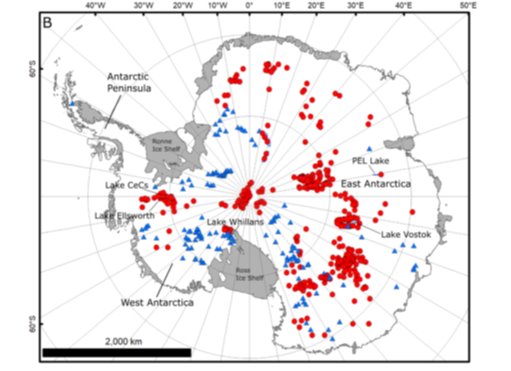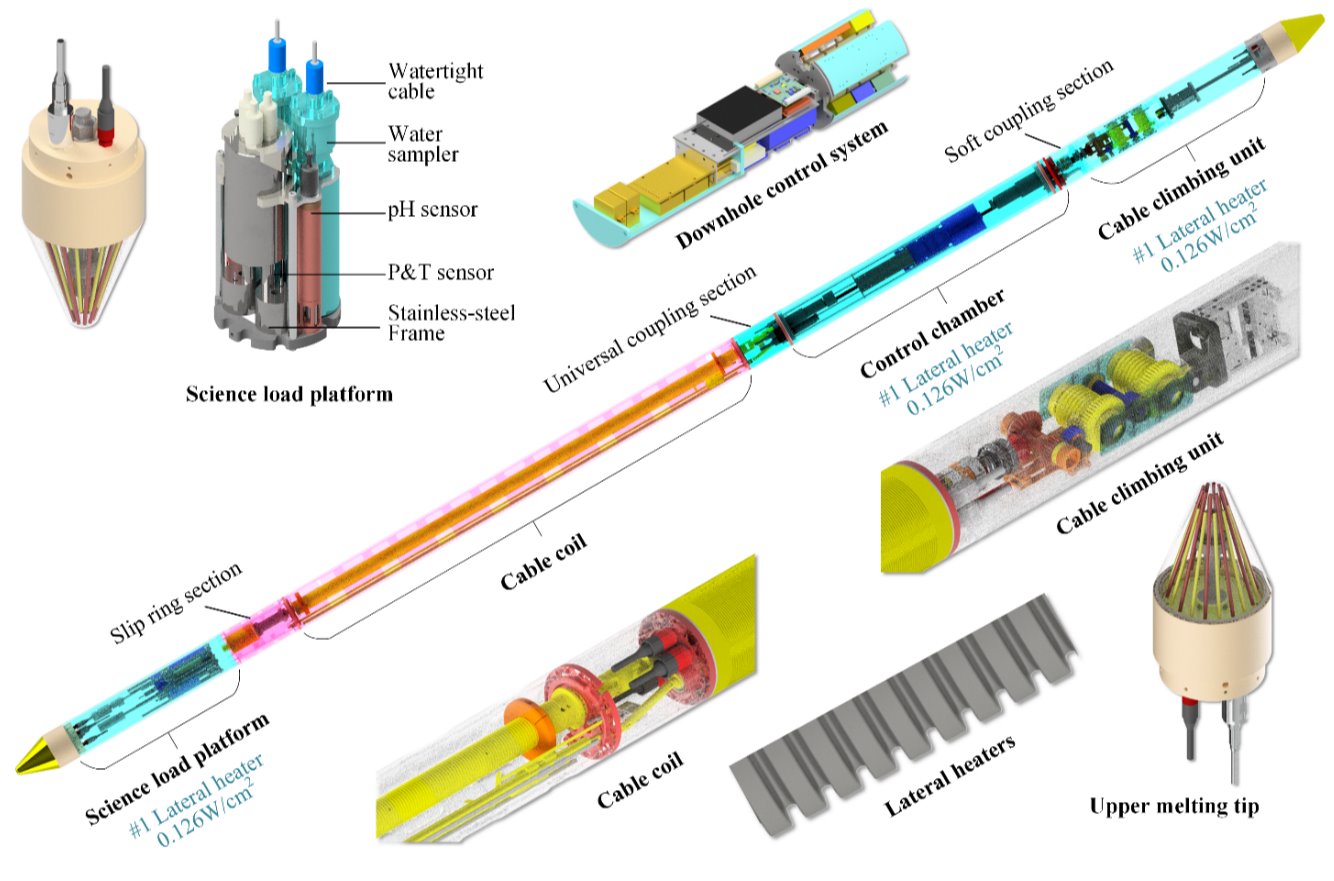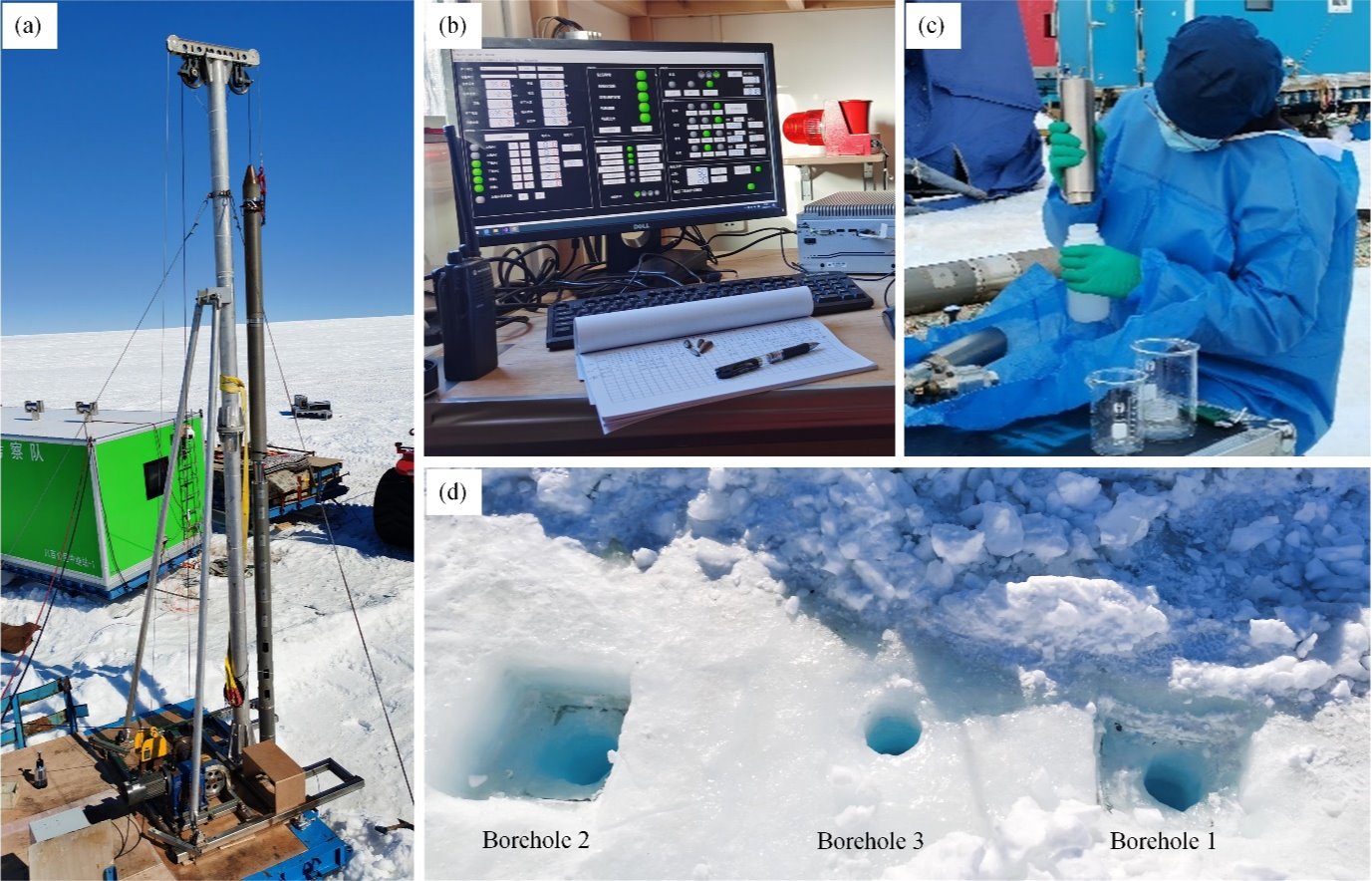A vast network of lakes, rivers, and streams has been revealed thousands of meters beneath the Antarctic ice sheet. The latest estimates indicate that the total surface area of subglacial lakes is nearly 10% of the ice sheet base; 675 subglacial lakes have been identified. Research on subglacial lakes can reveal the dynamic mechanism of lake formation, lake evolution, and its impact on the evolution of primitive life, the inversion of ice sheet history, and the impact of subglacial hydrological systems on the dynamic evolution of ice sheets; moreover, it can facilitate the generation of paleoclimate records. The discovery of subglacial aquatic environments has introduced a new area of science.

Distribution of Antarctic subglacial lakes
Scientific drilling and sampling are prerequisites for research on the physicochemical properties and microbial characteristics of Antarctic subglacial lakes. For pollution-free drilling in subglacial lakes, the Scientific Committee on Antarctic Research (SCAR) developed a code of conduct for exploration and research in subglacial aquatic environments. Chemical and biological contaminants in drilling fluids should be documented, and clean drilling and sampling technologies should be used when possible. Following this code of conduct, four attempts have been made by three countries in the last decade to access, measure in situ properties, and directly sample Antarctic subglacial lake environments.
Lake Vostok, the largest subglacial lake in Antarctica, was first penetrated in February 2012 by Russian drillers at a depth of 3769.3 m using deep ice-coring technology, allowing lake water to enter and freeze within the lower part of the ice-core borehole to recover a frozen sample of surface lake water. However, when the subglacial lake water entered the borehole, it mixed with the toxic drilling fluid, resulting in contamination of the subglacial lake water samples, making further study meaningless. On January 28, 2013, the US WISSARD (Whillans Ice Stream Subglacial Access Research Drilling) project team penetrated Subglacial Lake Whillans in West Antarctica using clean hot-water drilling technology and collected subglacial lake water and sediment samples, marking the first successful collection of clean Antarctic subglacial lake samples. Many paleoclimate and microbiological studies have been conducted. Subglacial Lake Mercer in West Antarctica was penetrated by the US SALSA (Subglacial Antarctic Lakes Scientific Access) project team using the same hot-water drilling system in 2018. In 2012, the British Antarctic Survey attempted to use a hot-water drill to sample the water column and sediments of Subglacial Lake Ellsworth in West Antarctica but failed. The British Antarctic Survey and the Centro de Estudios Cientficos, Chile, are planning to continue scientific exploration in Subglacial Lake CECs.
Although clean hot-water drilling can prevent pollution to a great extent, there is still a risk of contaminating the samples and the subglacial lake from material exchange between the subglacial lake water and the hot water in the borehole. The RECoverable Autonomous Sonde (RECAS) concept was proposed by Talalay et al. for environmentally friendly drilling and sampling. A unique feature of the RECAS is that it enables drilling downward and upward using a “bionic” inner cable recoiling mechanism in the same way that a spider climbs on a silk line. On the way down, a lower melting tip is switched on. The melted water behind the sonde refreezes to seal the borehole, isolating the subglacial lake from the external environment and minimizing pollution. When the sonde enters the subglacial lake, the scientific load platform is powered to measure the physical and chemical parameters of the lake water and collect a sample. The coil motor is activated, and the top melting tip is switched on. The sonde melts the ice and climbs along the cable frozen in the hole. Thus, the sonde reaches the surface with subglacial water samples.

The concept of RECAS system concept
The RECAS prototype was designed and tested with the support of the Ministry of Science and Technology of China. The length of the longest single piece was 2.5 m. Radial screws were used to connect the different parts coaxially. A 7075 aluminum alloy with an anti-corrosion coating on the surface was used as much as possible to reduce the weight of the sonde. The hyperbolic spiral-groove drum with an outer diameter of 60 mm was made of stainless steel. The maximum number of cable-winding layers was five. A total of 20 cartridge heaters were connected in series in each melting tip to increase the maximum working voltage to 800 V. However, to ensure long life, the working voltage of the RECAS prototype was set to 650 VDC, allowing sufficient power to drill at a speed of 1.5 m/h in an ice layer at -30 ℃. The internal components of the sonde were electrically connected using Subcon watertight cables.

Structure of RECAS prototype
In January–February 2022 (38th CHINARE), RECAS field test was conducted in Antarctica. The blue ice area on the flank of the Dålk Glacier was chosen as the test site, where the subglacial bedrock coring drill was tested during the 2018/2019 season.
Three boreholes with depths of 200.3 m, 183.2 m, and 133.5 m were drilled within 30 days; approximately 600 mL of water was collected from each hole. The surface input power commonly used during whole drilling was 9.96 kW, including 6.32 kW for the melting tip, 2.50 kW for the lateral heater, 1.09 kW of cable loss, and 0.05 kW for measurement and control system power. The average downward penetration rate for the three boreholes was 2.11 m/h; the average upward penetration rate was 3.6 m/h. During the field tests, all RECAS systems worked within the expected ranges.

RECAS field test in the Dålk Glacier, East Antarctica
This research was supported by the National Key Research and Development Project of the Ministry of Science and Technology of China (Project No.2016YFC1400302)